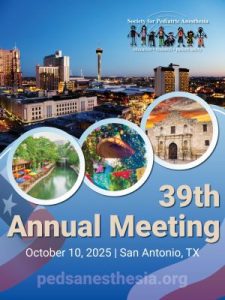{“questions”:{“b6am1”:{“id”:”b6am1″,”mediaType”:”image”,”answerType”:”text”,”imageCredit”:””,”image”:””,”imageId”:””,”video”:””,”imagePlaceholder”:””,”imagePlaceholderId”:””,”title”:”Presence of which of the following conditions will LEAST likely result in the development of an oculocardiac reflex?”,”desc”:””,”hint”:””,”answers”:{“md48g”:{“id”:”md48g”,”image”:””,”imageId”:””,”title”:”A.\tHeart transplant”,”isCorrect”:”1″},”0f6sf”:{“id”:”0f6sf”,”image”:””,”imageId”:””,”title”:”B.\tRetrobulbar block”},”tabh3″:{“id”:”tabh3″,”image”:””,”imageId”:””,”title”:”C.\tRemifentanil infusion”},”tx8bu”:{“id”:”tx8bu”,”image”:””,”imageId”:””,”title”:”D.\tEnucleation”}}}},”results”:{“heaxu”:{“id”:”heaxu”,”title”:””,”image”:””,”imageId”:””,”min”:”0″,”max”:”1″,”desc”:””,”redirect_url”:”https:\/\/pedsanesthesia.org\/wp-content\/uploads\/2024\/10\/Week-217-Oculocardiac-Reflex.pdf”}}}
Question of the Week #216
{“questions”:{“t9t03”:{“id”:”t9t03″,”mediaType”:”image”,”answerType”:”text”,”imageCredit”:””,”image”:””,”imageId”:””,”video”:””,”imagePlaceholder”:””,”imagePlaceholderId”:””,”title”:”You are called to the neonatal intensive care unit (NICU) to intubate a term 2-day-old neonate with a diagnosis of tetralogy of Fallot. The team has initiated her on a prostaglandin E1 (PGE1) infusion and supplemental oxygen, due to persistent hypoxemia. With these measures she had been stable with oxygen saturations in the 90s. Recently the NICU has observed several sudden drops in oxygen saturations that have resolved with bag-mask ventilation. Complete blood count, cerebrospinal fluid, and urinalysis are normal. Of the following, what is the MOST likely etiology of the desaturation? “,”desc”:””,”hint”:””,”answers”:{“kchjg”:{“id”:”kchjg”,”image”:””,”imageId”:””,”title”:”A.\tInfundibular spasm “},”5qvjb”:{“id”:”5qvjb”,”image”:””,”imageId”:””,”title”:”B.\tApnea “,”isCorrect”:”1″},”tzhew”:{“id”:”tzhew”,”image”:””,”imageId”:””,”title”:”C.\tSepsis”},”8i9mi”:{“id”:”8i9mi”,”image”:””,”imageId”:””,”title”:”D.\tDuctal closure”}}}},”results”:{“6hodq”:{“id”:”6hodq”,”title”:””,”image”:””,”imageId”:””,”min”:”0″,”max”:”1″,”desc”:””,”redirect_url”:”https:\/\/pedsanesthesia.org\/wp-content\/uploads\/2024\/10\/Week-216-Prostaglandin-E1.pdf”}}}
Question of the Week #215
{“questions”:{“qdcjk”:{“id”:”qdcjk”,”mediaType”:”image”,”answerType”:”text”,”imageCredit”:””,”image”:””,”imageId”:””,”video”:””,”imagePlaceholder”:””,”imagePlaceholderId”:””,”title”:”Which of the following is MOST LIKELY to occur as a long-term sequela of painful procedures in the neonate?”,”desc”:””,”hint”:””,”answers”:{“qtx7e”:{“id”:”qtx7e”,”image”:””,”imageId”:””,”title”:”A.\tDecreased biological response to subsequent painful procedures. “},”jzbqf”:{“id”:”jzbqf”,”image”:””,”imageId”:””,”title”:”B.\tLower stimulated cortisol response levels initially, followed by a reset of the endocrine stress response with higher cortisol levels later in life.”,”isCorrect”:”1″},”nvxvp”:{“id”:”nvxvp”,”image”:””,”imageId”:””,”title”:”C.\tEqual cognitive, motor skills and growth scores compared to controlled counterparts not exposed to repeated painful procedures. “},”6givv”:{“id”:”6givv”,”image”:””,”imageId”:””,”title”:”D.\tDecreased risk of secondary hyperalgesia.”}}}},”results”:{“i1615”:{“id”:”i1615″,”title”:””,”image”:””,”imageId”:””,”min”:”0″,”max”:”1″,”desc”:””,”redirect_url”:”https:\/\/pedsanesthesia.org\/wp-content\/uploads\/2024\/10\/Week-215-Nociception-in-Neonates.pdf”}}}
Question of the Week #214
{“questions”:{“56ul5”:{“id”:”56ul5″,”mediaType”:”image”,”answerType”:”text”,”imageCredit”:””,”image”:””,”imageId”:””,”video”:””,”imagePlaceholder”:””,”imagePlaceholderId”:””,”title”:”During a preoperative assessment of a 4-year-old child undergoing an elective procedure, the anesthesiologist notices multiple bruises of different ages on the child\u2019s arm. The caregiver provides a vague history regarding these injuries. Given these observations, what should the anesthesiologist\u2019s immediate course of action be?”,”desc”:””,”hint”:””,”answers”:{“7b7wv”:{“id”:”7b7wv”,”image”:””,”imageId”:””,”title”:”A. Proceed with the surgical procedure as planned without further action.”},”45fag”:{“id”:”45fag”,”image”:””,”imageId”:””,”title”:”B. Report the observations to child protective services (CPS) before proceeding with any further medical interventions.”,”isCorrect”:”1″},”ui989″:{“id”:”ui989″,”image”:””,”imageId”:””,”title”:”C. Recommend that the caregiver discuss the injuries with the child’s pediatrician at the next scheduled visit.”},”k9t1k”:{“id”:”k9t1k”,”image”:””,”imageId”:””,”title”:”D. Postpone the surgery until the child’s injuries are verified by a specialist in child abuse.”}}}},”results”:{“z2dwq”:{“id”:”z2dwq”,”title”:””,”image”:””,”imageId”:””,”min”:”0″,”max”:”1″,”desc”:””,”redirect_url”:”https:\/\/pedsanesthesia.org\/wp-content\/uploads\/2024\/10\/Week-214-Pediatric-NAT.pdf”}}}
Question of the Week #213
{“questions”:{“rnnuy”:{“id”:”rnnuy”,”mediaType”:”image”,”answerType”:”text”,”imageCredit”:””,”image”:””,”imageId”:””,”video”:””,”imagePlaceholder”:””,”imagePlaceholderId”:””,”title”:”A three-year-old boy presents for an emergent repair of an open distal radius fracture. His medical history is significant for asthma, obesity, and passive tobacco smoke exposure. He has had a runny nose and a productive cough over the past few days. Vital signs are notable for a temperature of 99.7 F and an oxygen saturation of 95%. Which of the following interventions is MOST likely to decrease his risk of a perioperative respiratory event?”,”desc”:””,”hint”:””,”answers”:{“7b8lv”:{“id”:”7b8lv”,”image”:””,”imageId”:””,”title”:”A.\tPreoperative midazolam administration”},”0oq8t”:{“id”:”0oq8t”,”image”:””,”imageId”:””,”title”:”B.\tMask induction with sevoflurane”},”kdxau”:{“id”:”kdxau”,”image”:””,”imageId”:””,”title”:”C.\tAnesthetic maintenance with total intravenous anesthesia (TIVA)”,”isCorrect”:”1″},”eg2fd”:{“id”:”eg2fd”,”image”:””,”imageId”:””,”title”:”D.\tRapid sequence intubation (RSI) with rocuronium “}}}},”results”:{“crb0k”:{“id”:”crb0k”,”title”:””,”image”:””,”imageId”:””,”min”:”0″,”max”:”1″,”desc”:””,”redirect_url”:”https:\/\/pedsanesthesia.org\/wp-content\/uploads\/2024\/09\/Week-213-PRAE.pdf”}}}
- « Previous Page
- 1
- …
- 9
- 10
- 11
- 12
- 13
- …
- 46
- Next Page »
